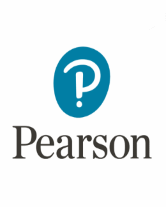Lesson Summary
The purpose of this lesson is to provide upper grade students with a systematic approach to spelling multiple syllable words. Any content area vocabulary words can be substituted for the examples used in this lesson.
Materials
- Picture cards
- Post it notes
- Pencils
- Paper
- Computers with a word processing program that includes a "spell check" feature
Planning and Diagnositics
Students must be able to segment words into syllables and syllables into phonemes.
Students must have knowledge of common phonics patterns.
Students must have some prior knowledge of the word meanings of the examples used in the lesson.
Vocabulary
- circumference
- angles
- bisector
- concave
- convex
- polyhedron
- congruent
Procedure
Hook/Engagement
Ask the students to spell the word "polyhedron" the best they can.
Tell them to turn to a partner and compare spellings. Write the correct spelling of the word on the board.
Think, Pair, Share: What strategies did you use to spell the word? Did you spell the word correctly? Which sound spellings were correct? Which were incorrect?
Ask the students to box all of the correct sound spellings with a green crayon and all of the incorrect sound spellings with a red crayon.
Focused Instruction
Tell students that today, they will learn a strategy that will help them to be more accurate spellers by breaking words into syllables and syllables into sounds.
Breaking Words into Syllables
Hold up the first picture card showing circumference. Segment and count the syllables in the word circumference: cir·cum·fer·ence
Use post it notes to mark each syllable on the board.
Point to each post it note as you repeat the syllables.
Run your finger under the post it notes as you blend the syllables to say the word circumference.
Breaking Syllables into Phonemes
Repeat the first syllable of the word circumference (/cir/) as you point to the first post it note on the board.
Break the syllable /cir/ into individual phonemes /s/ /er/. Represent each phoneme by placing skinny post it notes on top of syllable post it note.
Repeat for subsequent syllables.
Spelling Multiple Syllable Words
Segment each sound and represent each sound in the syllable by writing the corresponding sound spelling on each of the skinny post it notes.
Repeat process for each syllable.
Read each syllable, blend syllables to read word.
- Write complete word beneath the post it notes.
Use the "spell check" feature of a word processing program to double check accuracy. Note that your spelling has to be close to accurate for the word processing program to offer the correctly spelled word.
Shared Practice
Hold up the second picture card showing angles. Model how to segment and count the syllables in angles. Ask the class to turn to a partner and segment and count the syllables in the word angles: an·gles
Give each pair of students several post it notes.
Ask them to use a post it note to mark each syllable on their desks.
Ask students to point to each post it note as they repeat the syllables.
Ask students to run their finger under the post it notes as they blend the syllables to say the word angles.
Guide students through the remainder of the steps, allowing them to stop and practice with their partners.
Guided/Independent Practice
In partners or individually, ask students to repeat the process as you display additional picture cards. Circulate around the room to ensure each student has mastered the skill.
Assessment
Ask each student to use the process to spell the last two words on your list independently. Assess for accuracy and note the skills that cause difficulty for individual students.
Repeat the lesson with new words until students become proficient. This spelling strategy can be integrated into any content area.

Use a lesson that teaches students a systematic approach to using phonics in order to spell multiple syllable words.




